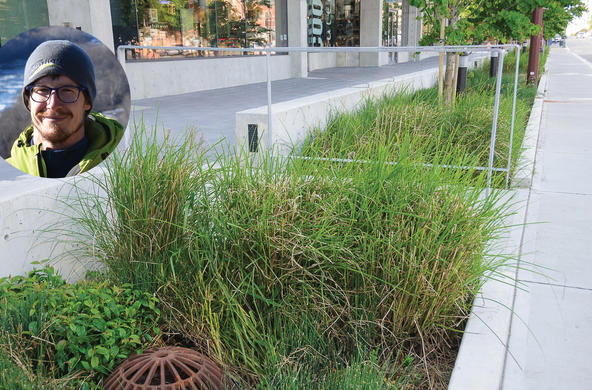Working with nature
Cities are on the front lines of climate change. Flooding, heat stress, and drought are top threats. Implementing nature-based solutions could help cities manage impacts of environmental change, with benefits for residents’ health and wellbeing.
Constructed wetlands purify water and attenuate coastal flooding. Urban forests and street trees reduce heat, clean the air, and absorb stormwater. These are just a few examples of the ways that green infrastructure can help cities cope with the effects of climate change.
We want to help cities leverage green infrastructure to build resilience in the face of global environmental change.
Evaluating whether green infrastructure is a universal good. Do perceptions of green infrastructure vary based on the social identity and economic status of different neighborhoods? To answer this question, we are mapping green infrastructure installations in Baltimore and conducting community interviews to understand how residents in underserved neighborhoods perceive existing and planned green infrastructure projects.
Assessing green infrastructure equity in sustainability plans. To inform best management practices, we are assessing the sustainability plans of 20 cities throughout the US. Focus is being given to how cities define green infrastructure and ways that equity principles are being used to guide green infrastructure siting.
Developing resources for citizens and practitioners, among them GIEquity.org, Governing Green: An Experiential Toolkit, and the ArcGIS StoryMap Is Green Infrastructure a Universal Good?
'Investigating the ecosystem effects of suburban sprawl. Suburban and urban landscapes across the US are starting to look increasingly similar. This trend is likely to have continental-scale implications for ecosystem processes and biodiversity. We are investigating the effects of ecological homogenization nationally and globally.
Engaging citizen scientists to test water quality of roof runoff. Increasing demands on diminishing water supplies means there is a growing need for alternative water sources like roof runoff. The ‘Off the Roof’ citizen science program has homeowners across the country testing their roof runoff for pathogens to determine how it could be best put to use.
Green infrastructure is an important tool in managing stormwater in cities.
Using 15 years of stream water records from Baltimore, Cary scientists measured how water quality differed from urban to rural sites. Stream data was coupled with data on two contrasting kinds of stormwater management infrastructure. They mapped green infrastructure, which includes things like bioswales and rain gardens, and gray infrastructure, which includes built structures like gutters and storm drains.
Both gray and green infrastructure were found to influence water quality in urban streams. However, while green infrastructure can reduce pollution inputs, gray infrastructure can, in some cases, have the opposite effect. To keep urban streams healthy, managers should consider the combined effects of green and gray water management infrastructure.
Green infrastructure can help reduce flooding and filter pollutants from land before they flow into freshwaters. With collaborators in the Science Policy Exchange, we compared different green infrastructure methods to see which worked best. Top performers included porous pavement, rain gardens, and green roofs.
Green infrastructure projects are a very important tool for urban resilience, but they are more likely to be successful if they are sited properly, managed, and perceived as a community benefit.
Steward Pickett





